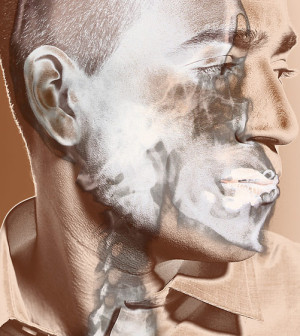- Skip Storing This Everyday Product in the Fridge Door
- Green Tea + B3 Pairing May Boost Brain Health
- Navigating Your Midlife Crisis: Embracing New Possibilities
- City Raccoons Showing Signs of Domestication
- Mapping the Exposome: Science Broadens Focus to Environmental Disease Triggers
- One Week Less on Social Media Linked to Better Mental Health
- Your Brain Changes in Stages as You Age, Study Finds
- Some Suicide Victims Show No Typical Warning Signs, Study Finds
- ByHeart Formula Faces Lawsuits After Babies Sickened With Botulism
- Switch to Vegan Diet Could Cut Your Greenhouse Gas Emissions in Half
Rise in U.S. High Chair Injuries Stuns Experts


Young children are falling out of high chairs at alarming rates, according to a new safety study that found high chair accidents increased 22 percent between 2003 and 2010.
U.S. emergency rooms now attend to an average of almost 9,500 high chair-related injuries every year, a figure that equates to one injured infant per hour. The vast majority of incidents involve children under the age of 1 year.
“We know that these injuries can and do happen, but we did not expect to see the kind of increase that we saw,” said study co-author Dr. Gary Smith, director of the Center for Injury Research and Policy at Nationwide Children’s Hospital in Columbus, Ohio.
“Most of the injuries we’re talking about, over 90 percent, involve falls with young toddlers whose center of gravity is high, near their chest, rather than near the waist as it is with adults,” Smith said. “So when they fall they topple, which means that 85 percent of the injuries we see are to the head and face.”
Because the fall is from a seat that’s higher than the traditional chair and typically onto a hard kitchen floor, “the potential for a serious injury is real,” he added. “This is something we really need to look at more, so we can better understand why this seems to be happening more frequently.”
For the study, published online Dec. 9 in Clinical Pediatrics, the authors analyzed information collected by the U.S. National Electronic Injury Surveillance System. The data concerned all high chair, booster seat, and normal chair-related injuries that occurred between 2003 and 2010 and involved children 3 years old and younger.
The researchers found that high chair/booster chair injuries rose from 8,926 in 2003 to 10,930 by 2010.
Roughly two-thirds of high chair accidents involved children who had been either standing or climbing in the chair just before their fall, the study authors noted.
The conclusion: Chair restraints either aren’t working as they should or parents are not using them properly.
“In recent years, there have been millions of high chairs recalled because they do not meet current safety standards. Most of these chairs are reasonably safe when restraint instructions are followed, but even so, there were 3.5 million high chairs recalled during our study period alone,” said Smith. However, even highly educated and informed parents aren’t always fully aware of a recall when it happens, he noted.
Still, Smith believes that a 2008 Consumer Product Safety Improvement Act will lead to a notable drop in recalls in coming years because it calls for independent third-party testing of children’s products before they’re put on the market.
This could eliminate many serious head injuries, he believes. According to the study, the most frequent ER diagnosis after a high chair fall is a concussion or internal head injury, otherwise known as a “closed head injury.” This type of head trauma accounted for 37 percent of high chair injuries, and its frequency climbed by nearly 90 percent during the eight years studied.
Nearly six in 10 children experienced an injury to their head or neck after a high chair fall, while almost three in 10 experienced a facial injury, the study found.
Injuries related to falls from traditional chairs were more likely to be broken bones, cuts and bruises.
For now, Smith said, the top three things parents can do to ensure their child’s safety: “Use the restraint, use the restraint, use the restraint!”
The tray is not meant to be a restraint. Children need to be buckled in, he added.
Also, supervision is a must. Stay with your child during meal time and make sure he or she doesn’t defeat the restraint, he said. “Even if a chair does meet current safety standards and the restraint is used properly, there’s never 100 percent on this . . . Parents will always need to be vigilant.”
Also, if the high chair has wheels, lock them in place. Make sure the high chair is stable, and position it away from walls or counters that the child can push against.
Kate Carr, president and CEO of the Washington, D.C.-based group Safe Kids Worldwide, called the findings a wake-up call.
“An alarming number of children under the age of 3 are seen in emergency departments,” she said. “This is an important reminder for parents and caregivers to take the time to make sure their children are safe and secure in their high chairs.”
More information
For more on infant and toddler safety, visit the U.S. Centers for Disease Control and Prevention.
Source: HealthDay
Copyright © 2025 HealthDay. All rights reserved.










